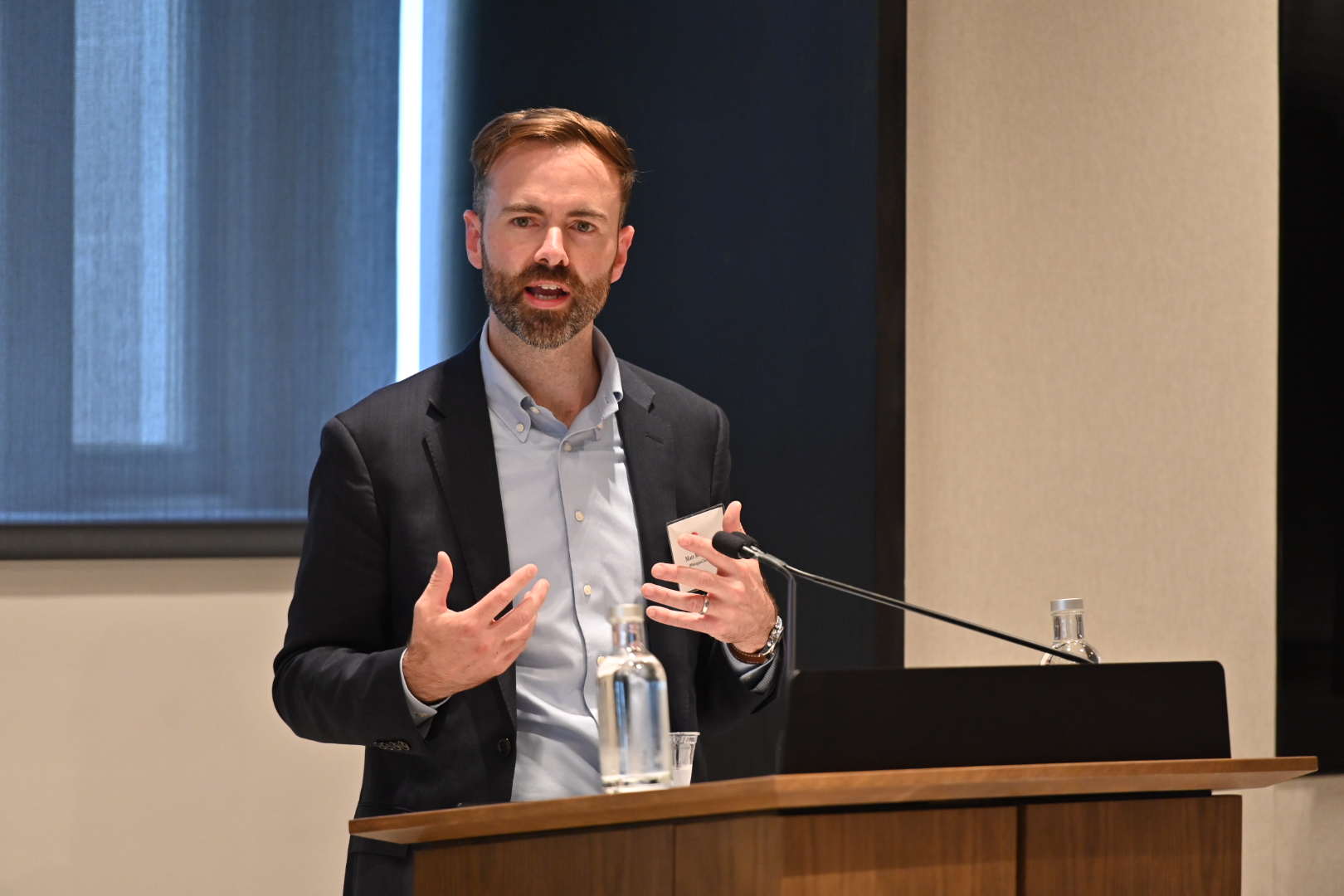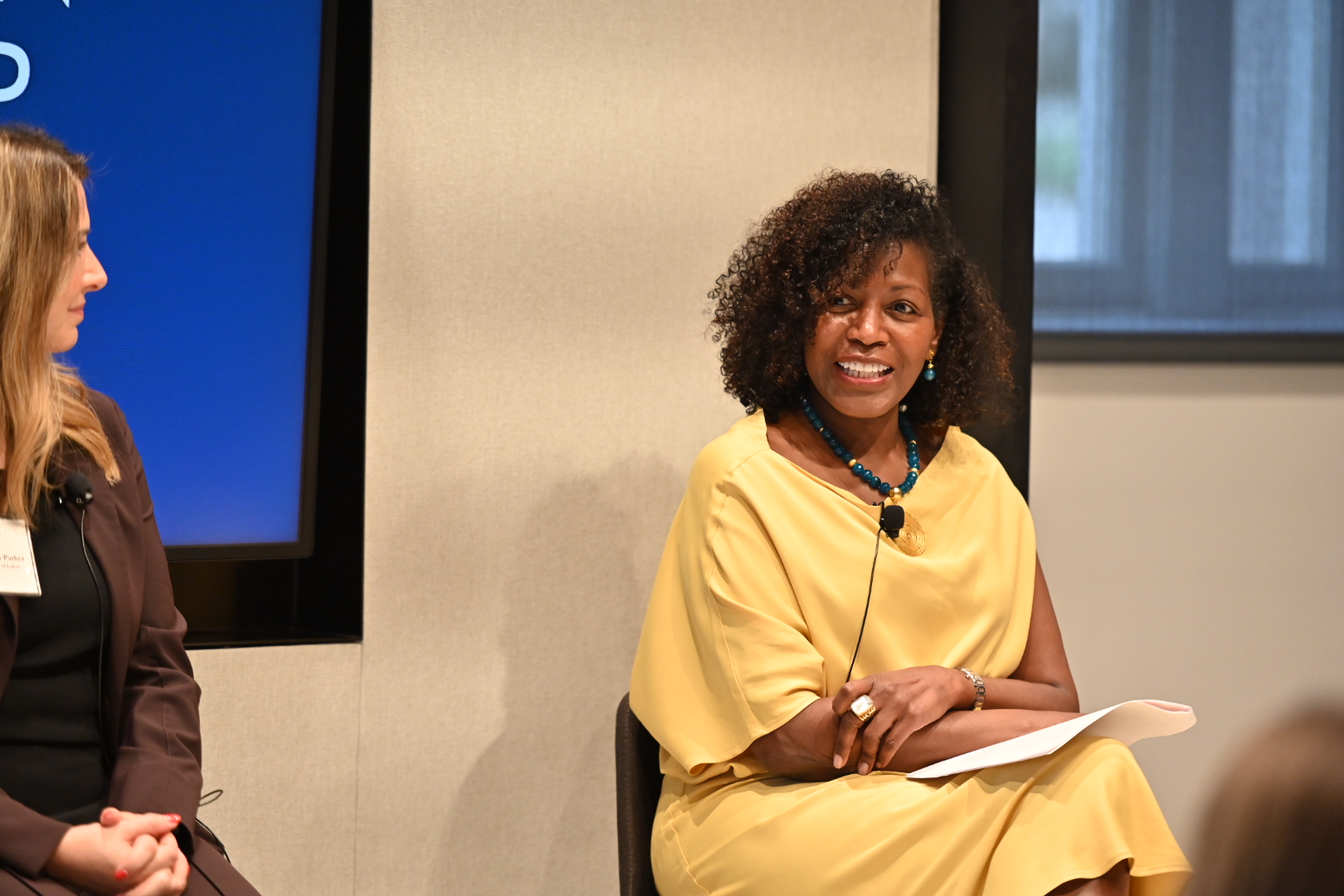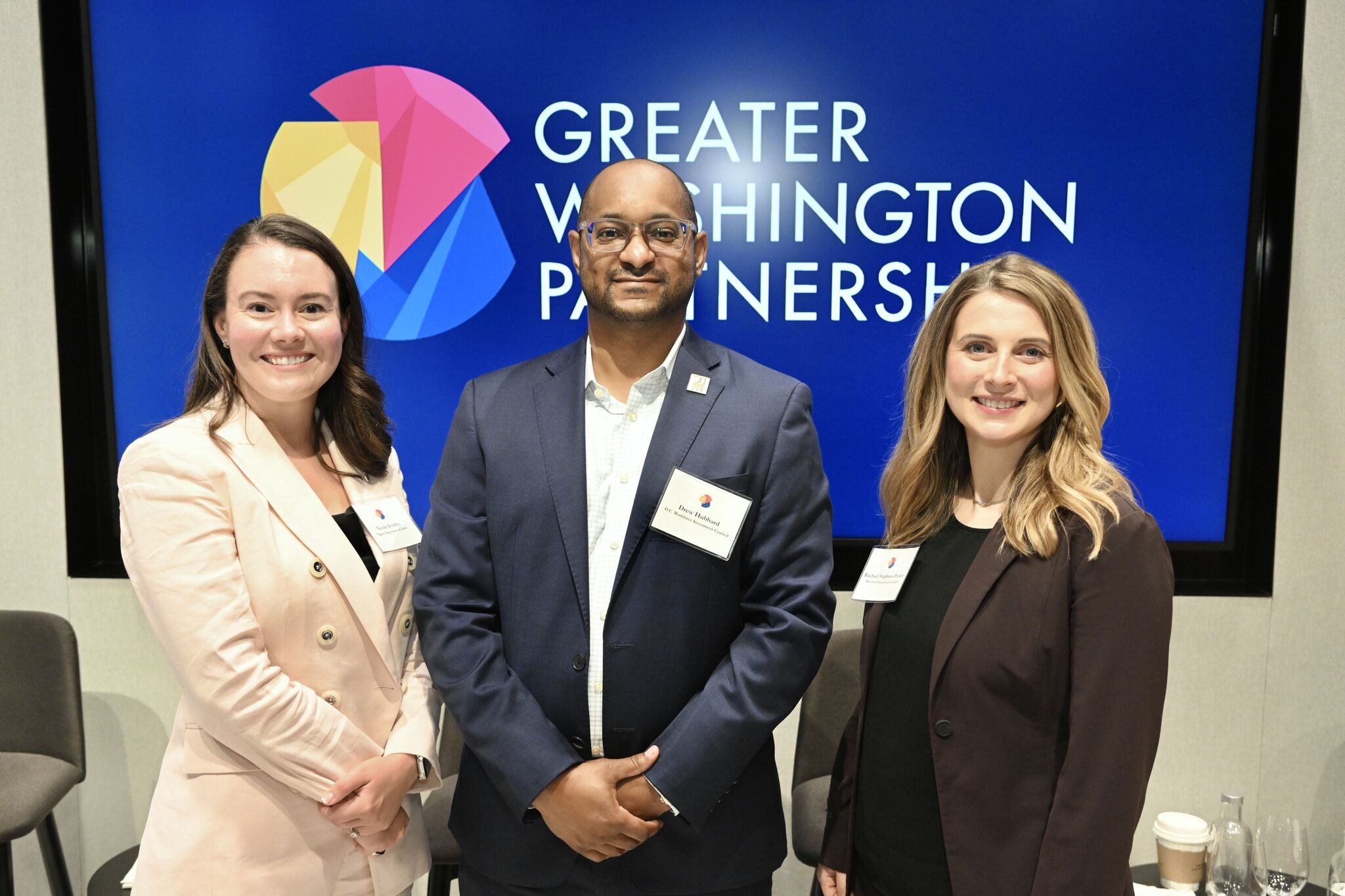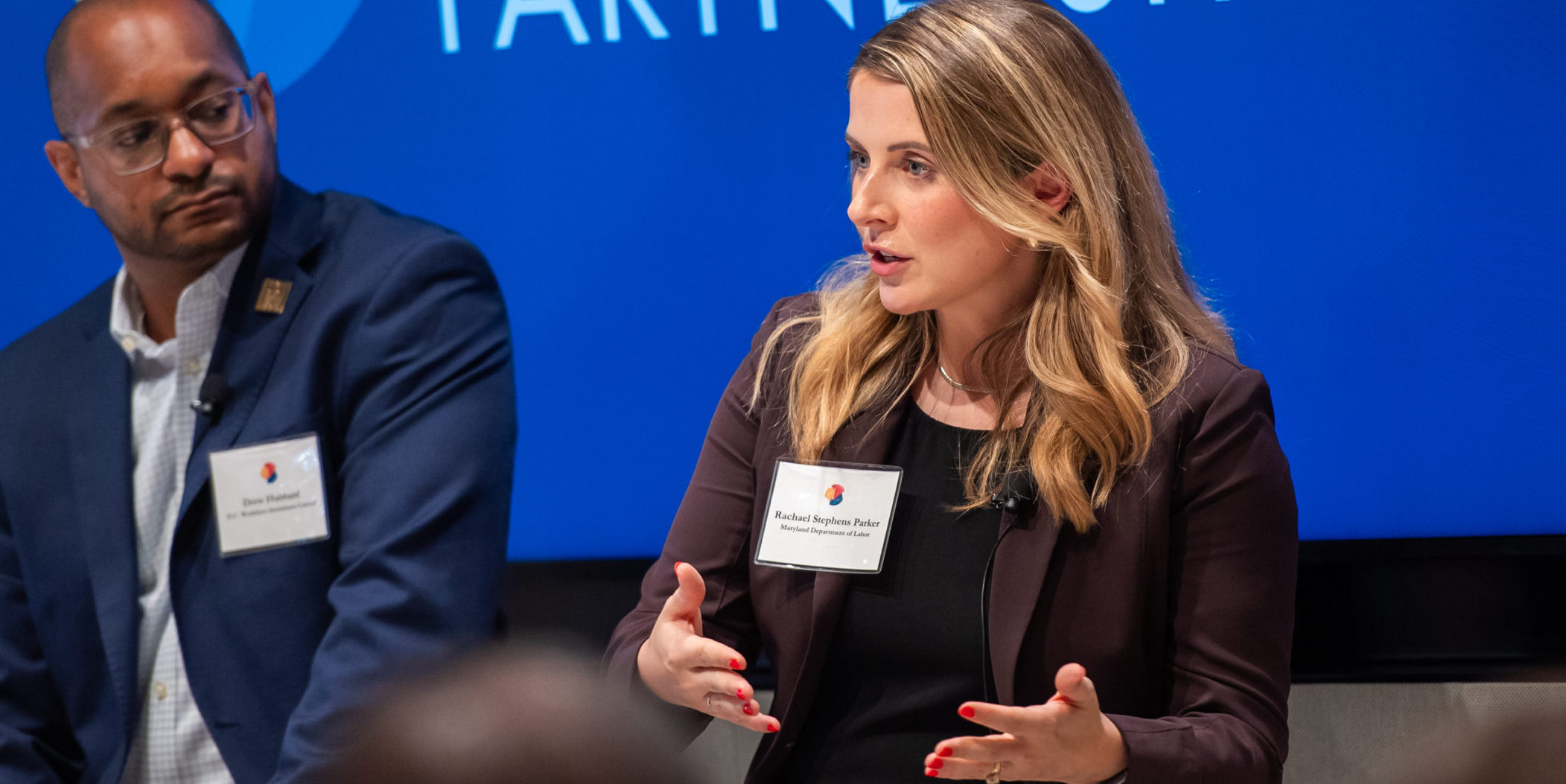On July 23, over 80 stakeholders joined Greater Washington Partnership at JPMorganChase’s Bowen Building Washington, DC office for the “Future of Talent: Regional Approaches to Workforce Development,” where leaders from workforce agencies in DC, Maryland, and Virginia provided updates on their initiatives to work across sectors and jurisdictions to expand and fill talent pipelines.
Matt Muench, head of Jobs and Skills at JPMorganChase, opened the event by sharing the firm’s new publication, Business Partnerships that Grow Talent Pipelines. The brief elevates cross-sector and cross-jurisdiction tools and initiatives both nationally and regionally, including the Partnership’s Employing Signaling System and TalentReady.
 |
“The future workforce will be shaped by how well leaders across sectors collaborate to align priorities, share resources, address challenges, and invest in strategies aimed at developing inclusive talent pipelines that support economic growth.” – JPMorganChase |
Lisa Hamilton, president and CEO of the Annie E. Casey Foundation and co-chair of the Partnership’s Skills & Talent Advisory Committee, moderated the panel, which included Drew Hubbard, executive director of the DC Workforce Investment Council (DC WIC), Nicole Overley, Deputy Secretary of Labor for Workforce Development for the Commonwealth of Virginia, and Rachael Stephens Parker, executive director of the Maryland Governor’s Workforce Board. As the speakers noted at the beginning of the conversation, this was the first time they’d served as panelists together.
 |
 |
Read below for more about the talent challenges and opportunities identified by our panelists.
Jurisdictions should consider new ways of collecting stakeholder feedback
Each of the panelists noted how state agencies should continue to seek input from newer employers to complement feedback provided by more established and engaged employer partners. To expand the table, Overley shared an example where she collaborated with the Virginia Economic Development Partnership (VEDP) to survey almost 2,000 employers on their talent needs and engagement with the workforce system. She cited a need to be “proactively reactive” to deliver and design services responsive to the needs of both individuals and employers.
Meanwhile, Hubbard elevated local workforce boards as a vehicle for collecting employer feedback, calling them “the front lines for employers” looking to make their voices heard. As Hubbard put it, “We have to change the thought of workforce development from a social service program to a value-added proposition for our business partners.”

Jurisdictions are centering students and systems as they tackle their goals
The region’s jurisdictions are focused on major goals, including the Blueprint for Maryland’s Future, which calls for the state to have 45% of all public high school graduates completing the high school level of a registered apprenticeship or another industry-recognized credential each year. Stephens Parker underscored Maryland’s efforts to gather stakeholder input to support the attainment of the Blueprint’s goals, considering the impact of policy changes on students on the ground: “It’s not just about the number. It’s about making sure every young person has good choices – real choices – they can make about their future. What do our policy-setting actions mean for students’ schedules, students earning wages – and what does it mean for their families?”
Meanwhile, as Virginia approaches its state strategic planning, Overley is prioritizing the engagement of community colleges in workforce conversations because of their proximity to local and regional partners across industries. “Every community college in Virginia has a chief workforce officer, and it’s about making sure that network is strong.”
Jurisdictions can utilize innovative partnerships to expand talent pipelines
Hubbard touted sector-based partnerships like DC Builds DC, which pulls together over 30 employers to support apprenticeships and talent development in the construction industry. He referred to it as a de facto “subcommittee of DC WIC” because of the sophisticated public-private relationships the initiative has created, noting that such programs allow companies to think collectively instead of competitively.
In a similar vein, Hubbard highlighted DC Hospital Association’s efforts to provide insights on the skills needed for healthcare careers through annual occupational healthcare reports. “They’re putting an industry stamp on the jobs we need to prepare for.”
Hubbard also acknowledged that while jurisdictions share the same pool of talent and employers, they often don’t efficiently share community resources. “We’re in talks about [Prince George’s County] giving us some space in one of their One Stops in Maryland. It’s about having conversations to look at how to support a common pool of workers.”
Jurisdictions are focused on introducing career exploration earlier in students’ journeys
Overley and Stephens Parker both pointed to efforts to reconsider how and where students receive career coaching. In Maryland, the Blueprint is deploying career coaches to every public middle and high school in the state. Similarly, Virginia increased the number of work-based learning coordinators in schools, creating a system that’s more adaptable to changing workforce needs and less dependent on the capacity of guidance counselors often tasked with helping students make connections to careers.
 |
“We have versions of career planning that happen in middle school. The question is, how is that supplemented by coaching that’s really industry-connected and responsive to the ways that skills are changing?” – Nicole Overley |
In DC, the Department of Employment Services is piloting work experiences for students in middle school and ramping up high school career and technical education programs to increase younger students’ exposure to careers.
Our region’s unique demand for public sector and contractor roles is an opportunity for collaboration
Each of our region’s jurisdictions faces challenges and opportunities related to providing talent for the federal government and private contractors.
Hubbard stressed the importance of buy-in at the top when considering how to fill government roles: “It’s having some of those direct conversations with the leadership of the federal agencies to really be in partnership and look for opportunities.”
Maryland is working to find creative pathways to roles requiring security clearances, including emphasizing “earn and learn” models like apprenticeships to ensure students are engaged and attaining the skills and credentials they’ll need while waiting for clearances. (Note: At the Partnership’s March Future of Talent, Howard Community College discussed the training two-year institutions can provide for apprentices as they wait for clearances. Read more about their apprenticeships here.)
Stephens Parker also expressed interest in partnering with employers to leverage the region’s veteran population, noting that many individuals leaving the military have clearances and the skill sets desired for open roles.
Across the board, the panelists uplifted the benefits of partnering across jurisdictions, calling for continued dialogue and coordination on resources to serve the region’s workforce. For more insights from these leaders, check out a video of the conversation here.
To learn more about Greater Washington Partnership’s Skills & Talent initiatives, contact Emily West at ewest@greaterwashingtonpartnership.com. Click Here to subscribe to the Partnership’s monthly Skills & Talent stakeholder email.
